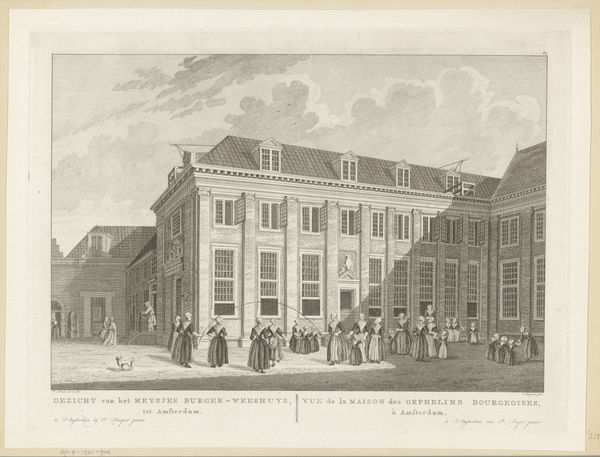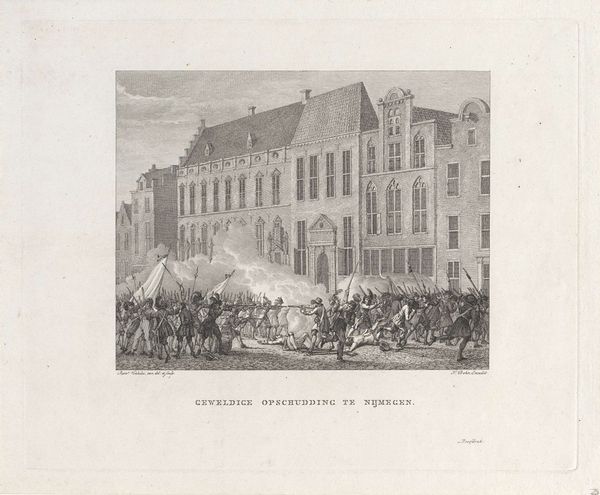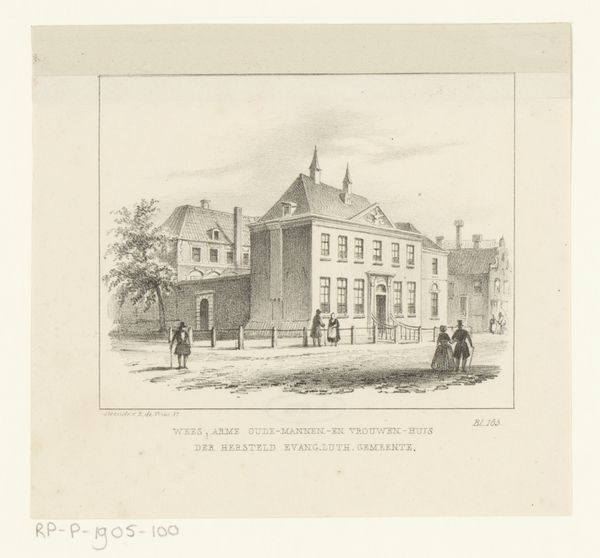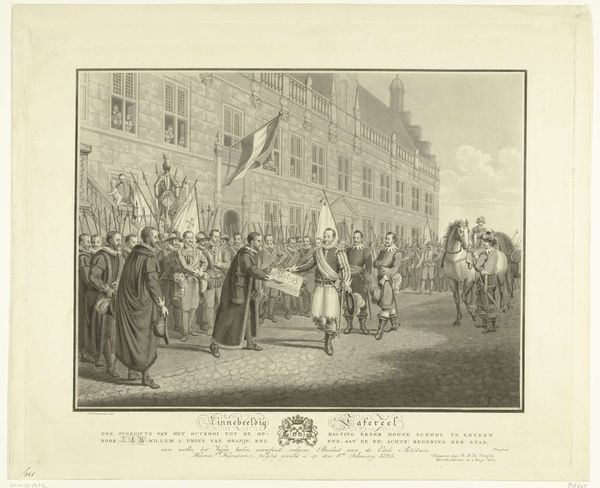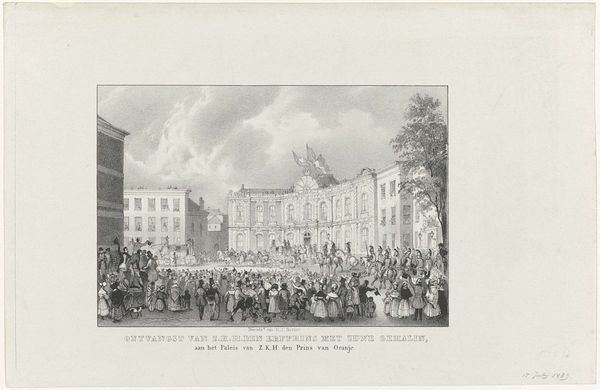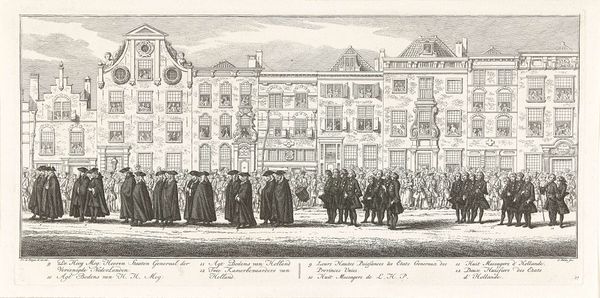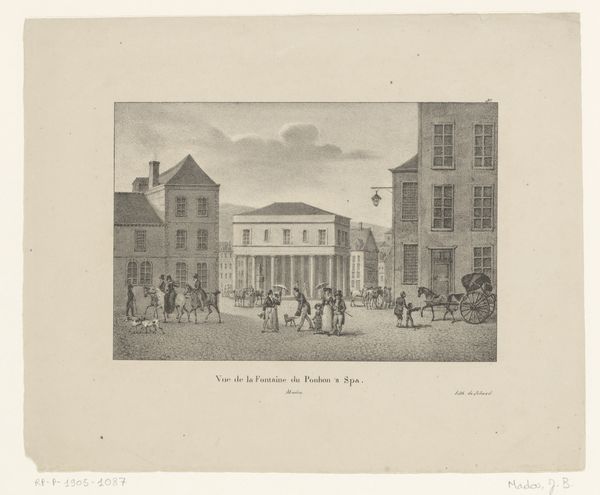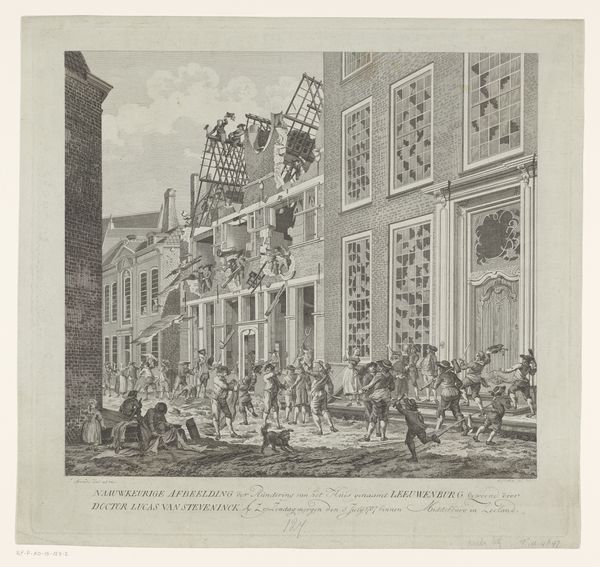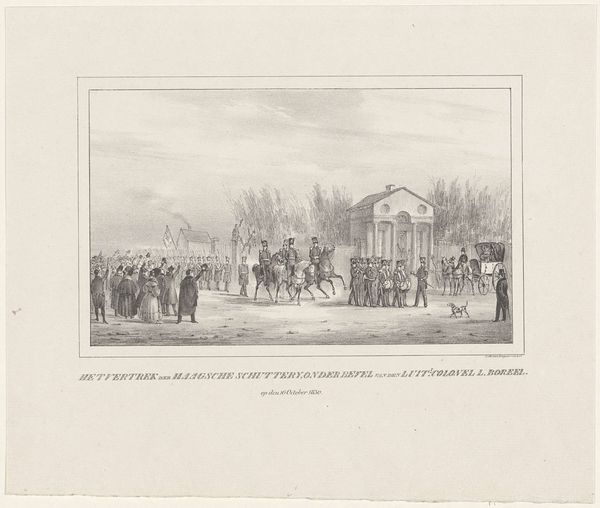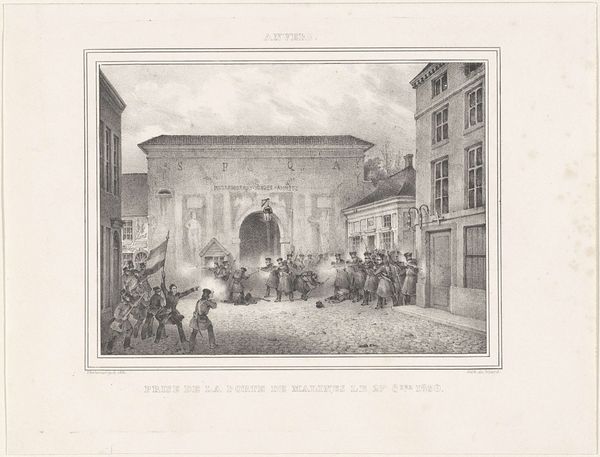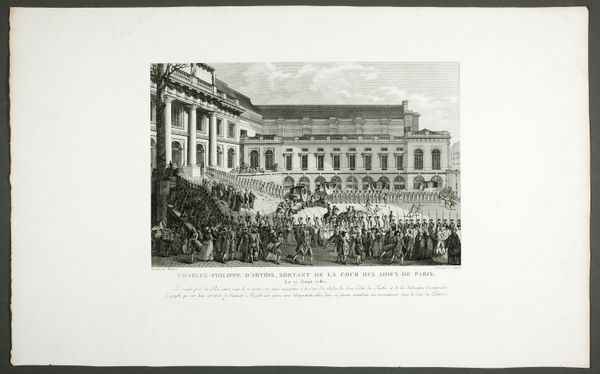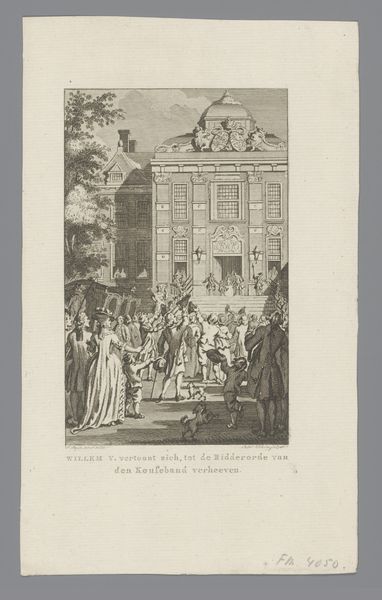
drawing, print, etching, paper, engraving
#
drawing
#
neoclacissism
# print
#
etching
#
paper
#
france
#
genre-painting
#
history-painting
#
engraving
Dimensions: 175 × 264 mm (image); 266 × 334 mm (plate); 314 × 498 mm (sheet)
Copyright: Public Domain
Curator: This etching by Claude Niquet, dating roughly between 1798 and 1804, depicts "The Arrest of Éprémesnil and Goislard." The work captures a specific moment during a turbulent period in French history. Editor: My first impression is one of starkness and unease. The monochrome palette, combined with the rigid architectural setting, creates a sense of cold authority. The figures appear both important and vulnerable, contributing to a rather heavy mood. Curator: Absolutely. Understanding the socio-political backdrop is key here. Éprémesnil and Goislard were members of the Parliament of Paris who fiercely opposed King Louis XVI's reforms. Their arrest symbolizes the monarchy's attempt to suppress dissent, igniting further revolutionary fervor. We see that power dynamic vividly displayed here. Editor: Symbolically, I see the architecture itself acting as a representation of power. The imposing building looms over the figures, almost swallowing them. Note the symmetry—typical of neoclassical art, yes, but here it underscores the inflexible nature of the established order being challenged. Curator: Indeed. And if we consider the iconography, their arrest in itself can be seen as a crucial symbolic moment: It revealed the monarchy's weakening grip, contributing to the broader narrative of escalating revolution and the growing sense of the ancien regime's decline, alongside issues of governance and representation for everyday people. Editor: This artwork carries a resonance far beyond the immediate historical event. It speaks to universal themes of resistance, the clash between individual rights and state power, and the fragility of authority. It serves as a powerful visual representation of a pivotal moment. Curator: For me, this piece offers a reminder of how even seemingly small acts of resistance can contribute to larger societal shifts, and that revolution does not just materialize out of thin air but has its own historical context and intersectionality that we must be keen to identify. Editor: And for me, it demonstrates the potency of images to distill complex histories into instantly comprehensible and emotionally resonant forms, even after centuries.
Comments
No comments
Be the first to comment and join the conversation on the ultimate creative platform.
